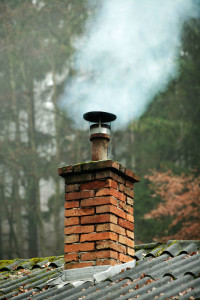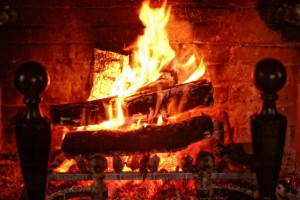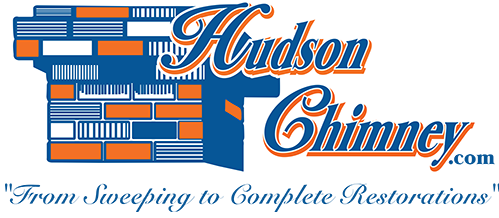by Mark Hudson | Feb 11, 2016 | Chimney Draft Issues
Trying to start a fire when your chimney is filled with cold air can be a challenge. Once you get the fire lit, you end up with smoke blowing back into the room because all of that cold air sinking down the chimney. This once-seemingly simple task can end up causing a lot of frustration. Knowing how to prime your chimney can be a game-changer if you have cold chimney problems. Hudson Chimney would like to eliminate any frustrations you may have with igniting a fire by telling you how you can warm up your flue, along with a couple of other tips on starting and maintaining a good fire.
Priming your chimney

When the weather is cold outside, the air in your chimney can be just as chilly, especially if your chimney is built on the exterior of your house. Once you open the damper to prepare to get a fire started, that heavy cold air in the flue will sink down the chimney into your home and create difficulties in lighting a fire. The key to preventing this cold air sink is priming your chimney before attempting to light the fire. All you have to do is light a rolled-up newspaper and hold it like a torch up the damper for several minutes. You should be able to feel the draft reverse once enough warm air has mixed with the cold air. Once you feel this reversal, you should be ready to light a fire.
Insulating your firebox
Another way to help you start a fire with no problems is to insulate your firebox with a thin layer of ashes. The Chimney Safety Institute of America (CSIA) recommends leaving a one-inch layer of ashes on your firebox floor to protect and insulate the firebox, which makes it easier to build and maintain a good fire. If you are using your fireplace on a regular basis, you should be removing the ashes every week. Just remember to leave that thin layer of ashes when you do this task.
Building a top-down
To keep your fire burning, you should be using the top-down burn method when you build the fire. For this build, you start by placing the largest pieces of firewood on the bottom of the firebox. Next, take smaller pieces of wood and layer them on top of the larger pieces. At the very top of this stack, place a layer of kindling and wood shavings. You should be able to light the kindling with a single match. Not only does this build allow the fire to burn longer with less maintenance, but it also will burn cleaner because the smoke does not have to pass through cold firewood.
Want more wood burning tips? Contact us at Hudson Chimney to learn how to maximize your fireplace.
by Mark Hudson | Jul 10, 2015 | Chimney Draft Issues
Since your chimney is a venting system, draft issues can affect the performance of your fireplace and chimney. Draft problems can cause different outcomes, and repairing a draft issue depends on what is causing the problem. At Hudson Chimney, we often get calls from customers who are unsure if and how draft could be affecting their chimneys. We thought we would share some information from Mother Earth News about how to tell if you have a drafty chimney and how to identify what is causing the problem.

You have a hard time lighting a fire.
If you cannot seem to get a good fire burning in your fireplace, there is a good chance your chimney is too cold. Cold temperatures have an effect on chimney draft. If you feel cold air coming from your fireplace, you may need to prime the flue before starting a fire. Simply light a rolled-up newspaper and hold the flame as high as you can into your chimney until you can feel the draft reverse.
Smoke blows into your house from the fireplace.
Sometimes, this problem can be solved simply by repairing the damper to ensure it fully opens to allow smoke to properly exit out of the chimney. However, other things can lead to smoky fireplaces, including cold chimneys. The size of your flue can also cause draft issues that lead to smoke blowing into your home through the fireplace. If you only notice a smoky fireplace on windy days, you may need a new chimney cap to keep wind patterns from reducing the chimney flow. You can contact Hudson Chimney to take care of these problems that are causing draft issues for your chimney.
You notice unpleasant odors coming into your home from your fireplace.
If your home is noticeably smoky smelling and you are not burning a fire in your fireplace, negative air pressure is most likely the reason for the odor entering your house through the fireplace from the chimney. Many times when people weatherize their homes to heat and cool more efficiently, they can seal up windows and doors too tightly. This creates the need for more air to be brought into the home through the fireplace, and this air brings along the smoky smells of the chimney. An easy way to combat negative air pressure is to slightly open up a window to allow more air to enter the house.
Are you dealing with any of these chimney draft issues? Contact Hudson Chimney to schedule a consultation with our Chimney Safety Institute of America (CSIA)-certified chimney sweeps to professionally diagnose and solve this problem for you. We work hard to keep your fireplace and chimney working safely and properly.


